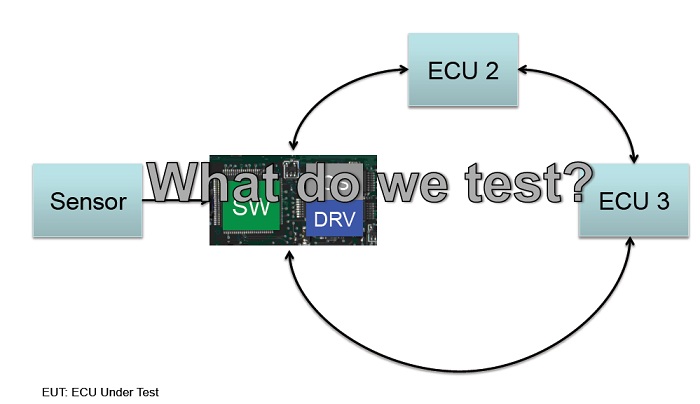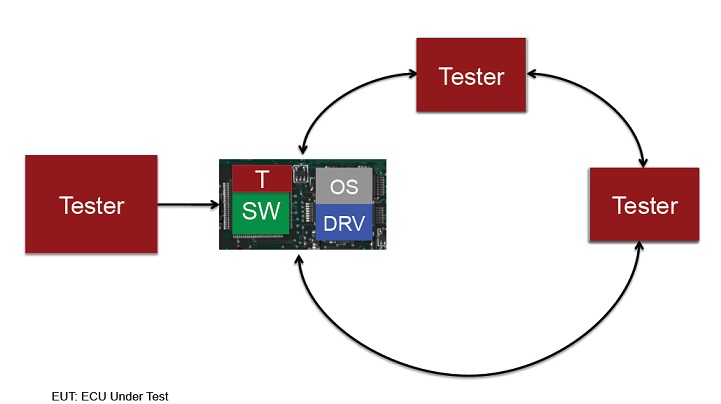
----Testing of Embedded Applications
嵌入式系统(embedded system )是大型系统中用于特殊控制功能的计算机系统,嵌入式系统通常有实时计算的限制要求。测试基于软件的嵌入式系统变得越来越复杂。在嵌入式系统测试中,非功能性要求,尤其是时间相关的输入输出行为需要考虑。恰当的标准化的解决方案需要有灵活性,可重用性及抽象性的特点。在汽车工业领域,汽车电子嵌入式系统的测试采用TTCN-3来实现,比如AUTOSAR。本文探讨基于TTCN-3和TTworkbench的嵌入式系统测试方法。

General Questions
What is tested?
What type of flexibility is required in the test scenarios? How are the test described?
How are the results stored, exported, fedback?
Online? Off-Line?
Storage?
How can the test system interact with the embedded application?
Build-in interfaces?
Additional (test) interfaces?
How can the impact of the test system to the embedded application be minimized?

TTworkbench in Embedded Applications

TTworkbench Applicability
Host-based execution
1. Small footprint on ECU
l Light-weight communication
l Standardized TRI implementation
TRIDatagram
![]() Various channels usable
Various channels usable
l Least impact on SUT
l Ready for new TTCN-3 features
![]() TTCN-3 RT
TTCN-3 RT
l Using the full power of TTworkbench for specification,execution and result analysis
Target-based execution
l Heavy footprint of a fullfledged TTCN-3environment
l Prototypical
implementation for selected RT features available
![]() FreeRTOS
FreeRTOS
![]() RTAI Linux
RTAI Linux
![]() Features as kernel modules
Features as kernel modules
Summary
![]() Most testing questions can be addressed with a hostbased test execution.
Most testing questions can be addressed with a hostbased test execution.
![]() Minimal influence of the test system on the ECU motivates the selection.
Minimal influence of the test system on the ECU motivates the selection.
![]() TriDatagramm is a very flexible yet standardized way toimplement host-based test execution.
TriDatagramm is a very flexible yet standardized way toimplement host-based test execution.
![]() All language features of TTCN-3 can be used.
All language features of TTCN-3 can be used.
![]() Testing Technologies recommends an evaluation of a host-based test execution in the first place
Testing Technologies recommends an evaluation of a host-based test execution in the first place